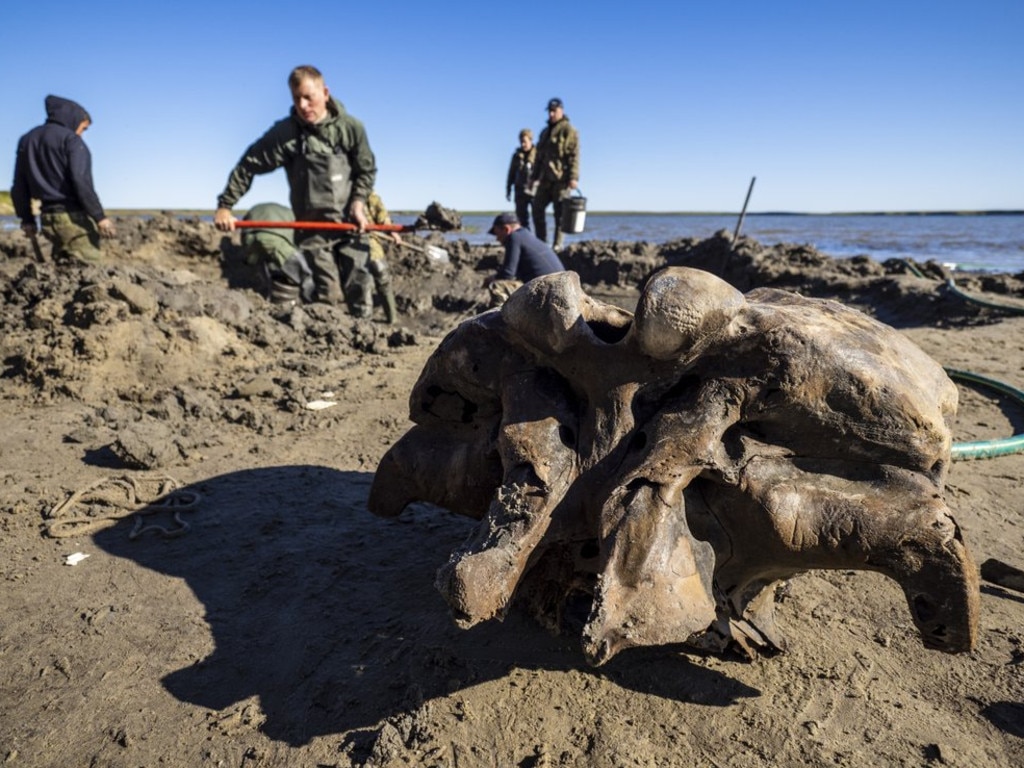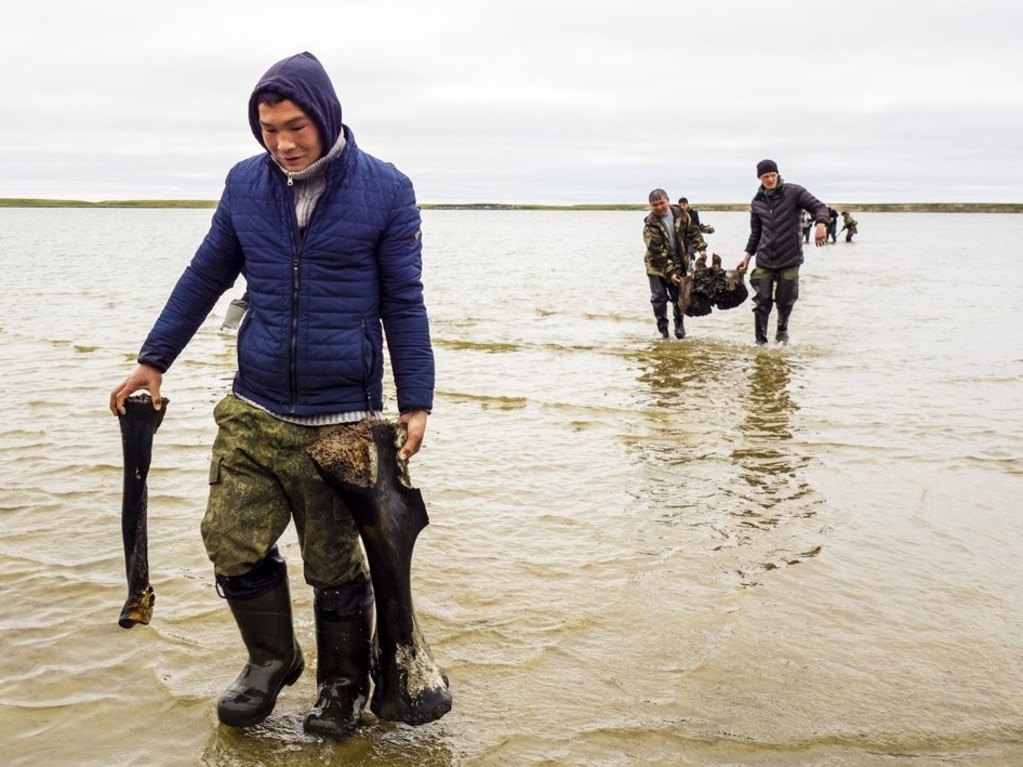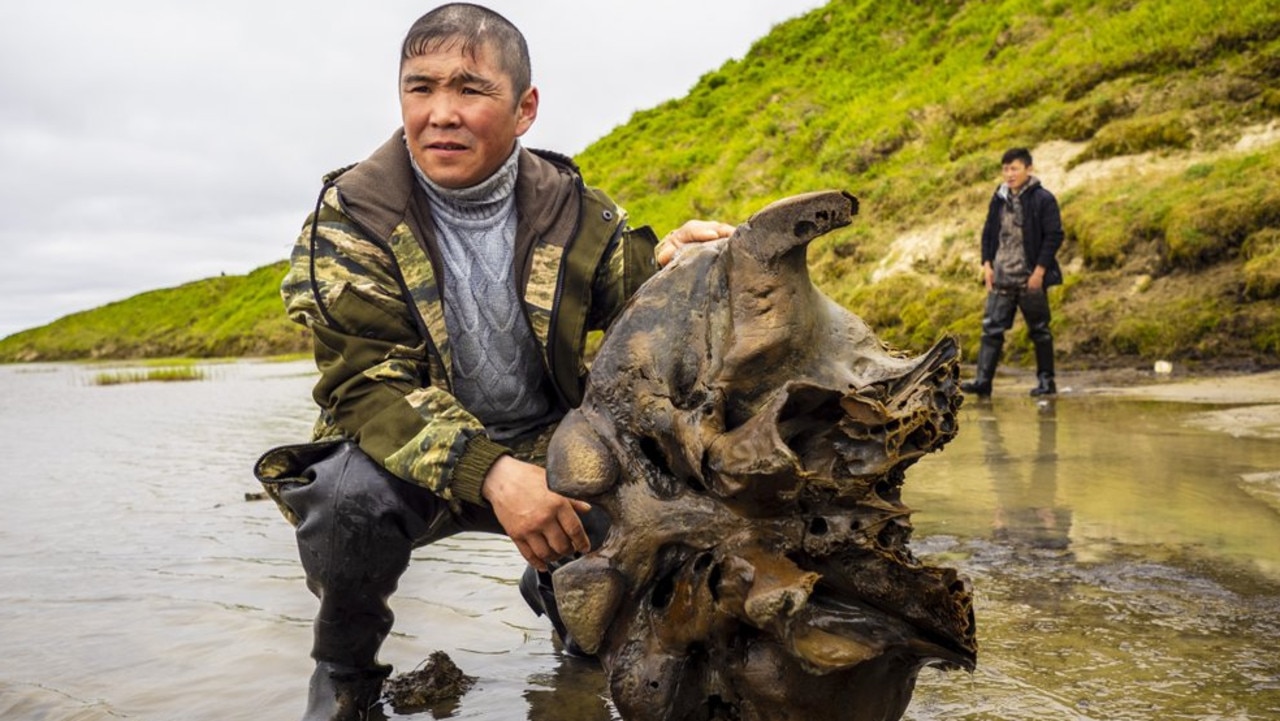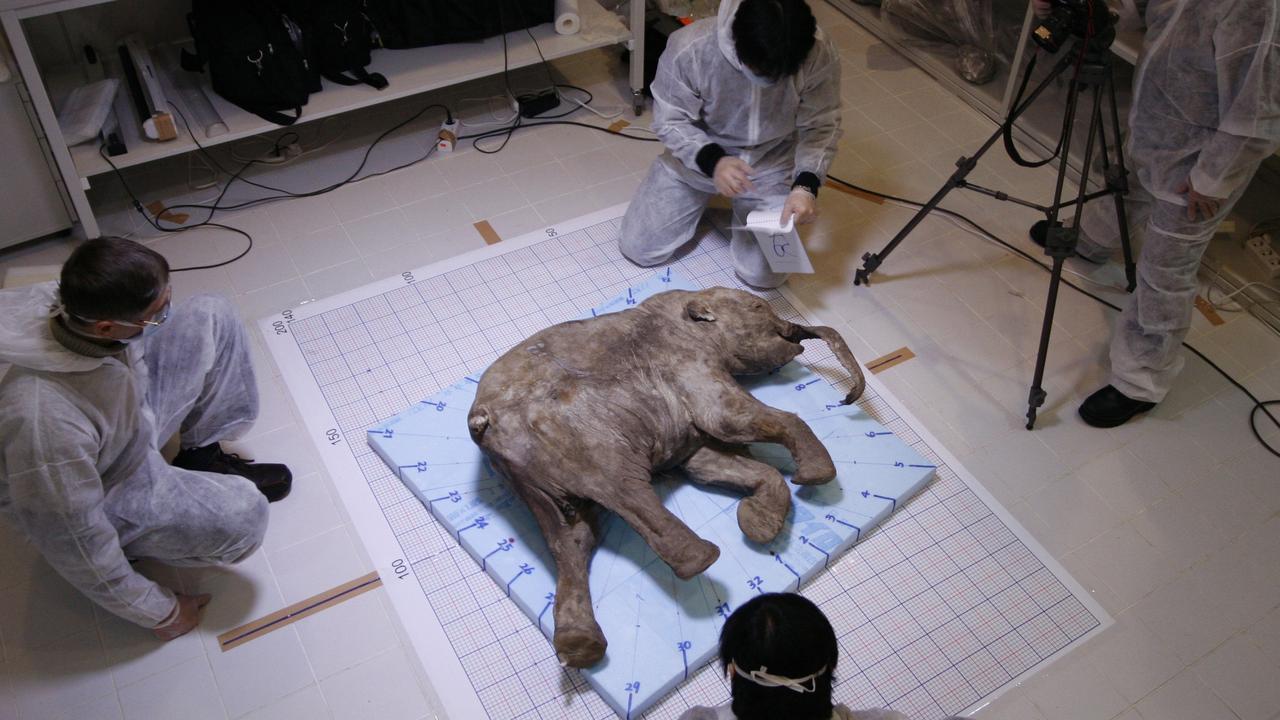Siberian reindeer herders stumble over woolly mammoth skeleton in lake
Scientists are working to retrieve the skeleton of a woolly mammoth from the shallows of a lake in northern Siberia where reindeer herders discovered it in recent days

READING LEVEL: GREEN
Reindeer herders in northern Siberia, Russia, have discovered the well-preserved skeleton of a woolly mammoth that has some ligaments* still attached to it.
Scientists are working to retrieve the mammoth from the lake in which it was found.
The reindeer herders noticed the mammoth in the shallows of Pechevalavato Lake in the Yamalo-Nenets region a few days ago. They found part of the animal’s skull, the lower jaw, several ribs, and a foot fragment* with ligaments still intact.


Woolly mammoths are thought to have died out around 10,000 years ago, although scientists think small groups of them may have lived on longer in Alaska, US and on Russia’s Wrangel Island off the Siberian coast.
Russian television stations have shown scientists looking for fragments of the skeleton in the lakeside silt*.
The scientists have retrieved some bones and also located more massive fragments protruding* from the silt. They said it would take significant time and special equipment to recover the rest of the skeleton — if it had all survived in position.

Yevgeniya Khozyainova of the Shemanovsky Institute in Salekhard, Russia, said in a TV interview that finding the complete skeleton of a mammoth is relatively rare. Such finds allow scientists to deepen their understanding of mammoths.
Several well-preserved frozen carcasses* of mammoths have been found in the permafrost* of northern Siberia.
Siberia is undergoing a heatwave and the UN weather agency warned last week that average temperatures were 10C above average for June.

GLOSSARY
- ligaments: tough substance that holds two bones together across a joint
- fragment: small piece
- silt: fine sand or other material carried by water
- protruding: sticking out
- carcasses: dead bodies
- permafrost: permanently frozen ground
EXTRA READING
Mystery ‘bonehenge’ woolly mammoth ring
Quest to bring woolly mammoths back to life
Hairy, scary, frozen Ice Age wolf’s head found
Melting ice leaves sled dogs walking on water
QUICK QUIZ
- What job do the people who found the skeleton do?
- When did most woolly mammoths die out?
- What locations could have been exceptions to the extinction elsewhere?
- How come the mammoth carcasses found were so well preserved?
- How much higher than average was Siberia in June?
LISTEN TO THIS STORY
CLASSROOM ACTIVITIES
1. Write a Job Application
Imagine the Russian scientists are looking for kids to join them and help search for and study the woolly mammoth. Write a letter explaining why you would be perfect for the job. In your letter, describe the qualities that make you a great assistant, why the work is important and why you would love to be part of their team.
Time: allow 30 minutes to complete this activity
Curriculum Links: English, Personal and Social Capability, Science
2. Extension
The scientists said they would need special equipment to help them to find and recover the rest of the mammoth’s skeleton. What do you think they need? Design a piece of equipment or a tool that you think could be used by the scientists to help them in their search for more pieces of the mammoth’s skeleton. Remember to write an points that explain how and why your new equipment or tool would help the scientists.
Time: allow at least 30 minutes to complete this activity
Curriculum Links: English, Design and Technologies, Critical and Creative Thinking
VCOP ACTIVITY
Aside from this, there is also this!
Brackets are a great literacy tool for adding aside comments, or comments that could be covered over and the sentence still makes sense. What’s inside the brackets is extra information.
They can be used for a variety of effects: to add more detail, to add humour, to connect with the reader etc.
My little brother, (the funniest kid I know) got himself into big trouble today.
Select 3 sentences from the article to add an aside comment to using brackets. Think about not only what you want to add to the sentence, but also what effect you are trying to create.
HAVE YOUR SAY: What old thing would you like to find in a lake?
No one-word answers. Use full sentences to explain your thinking. No comments will be published until approved by editors.

